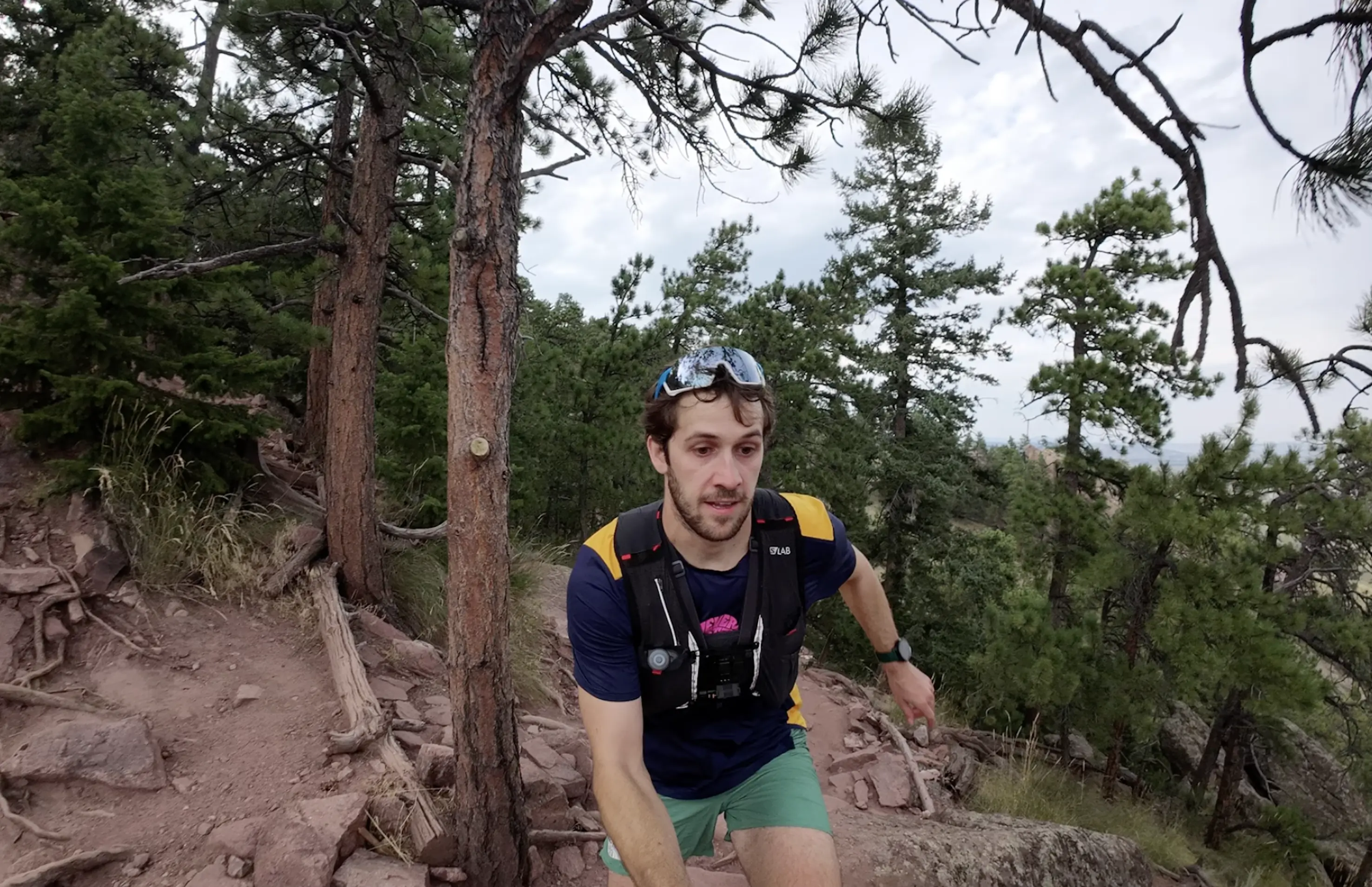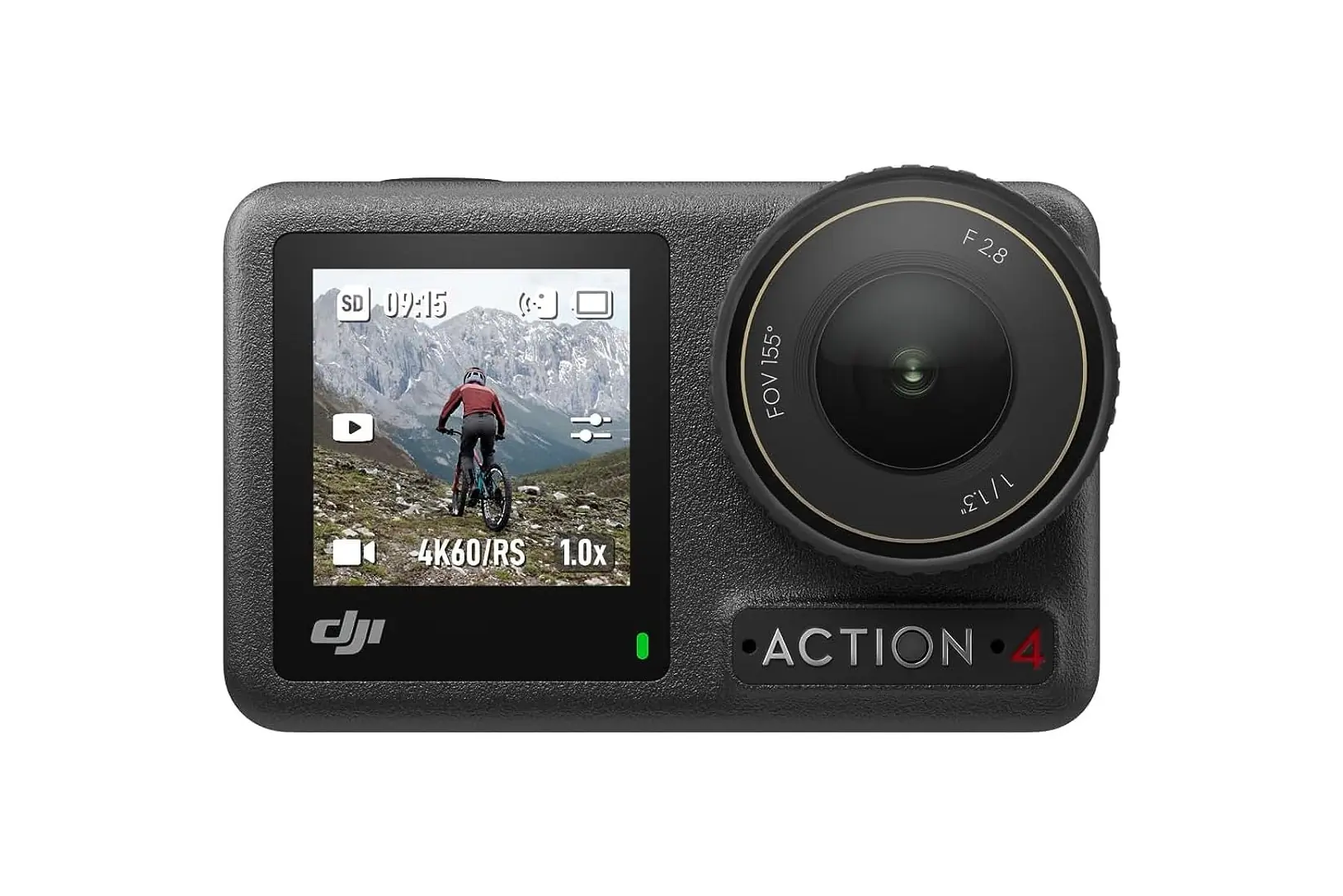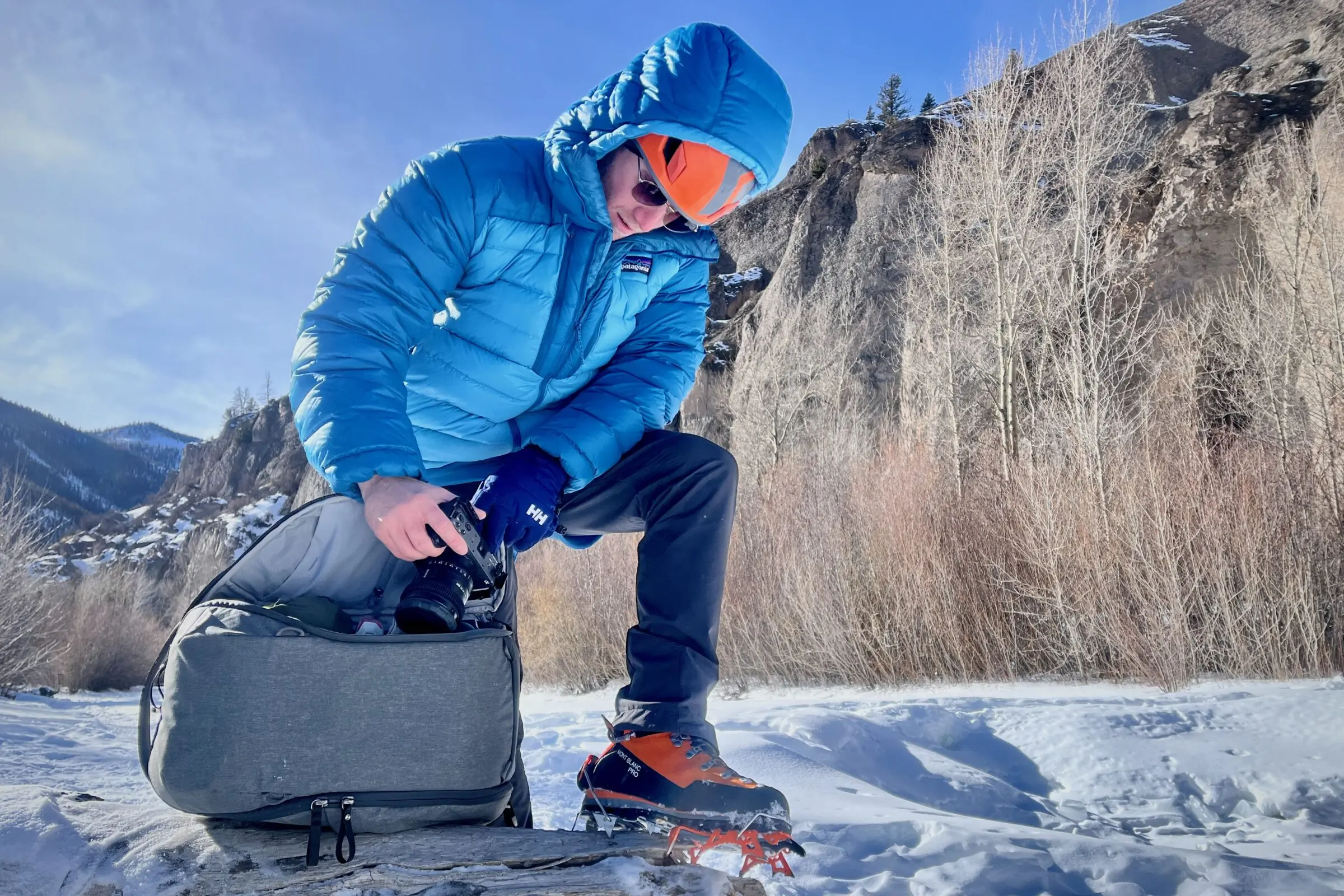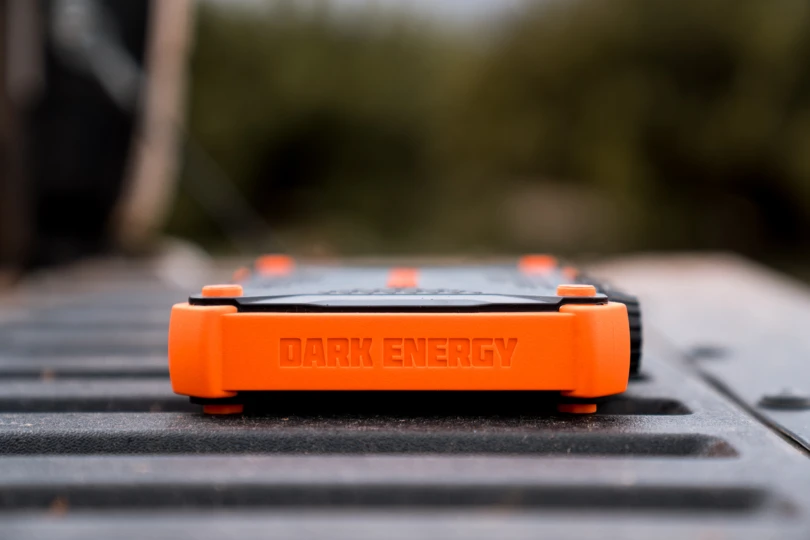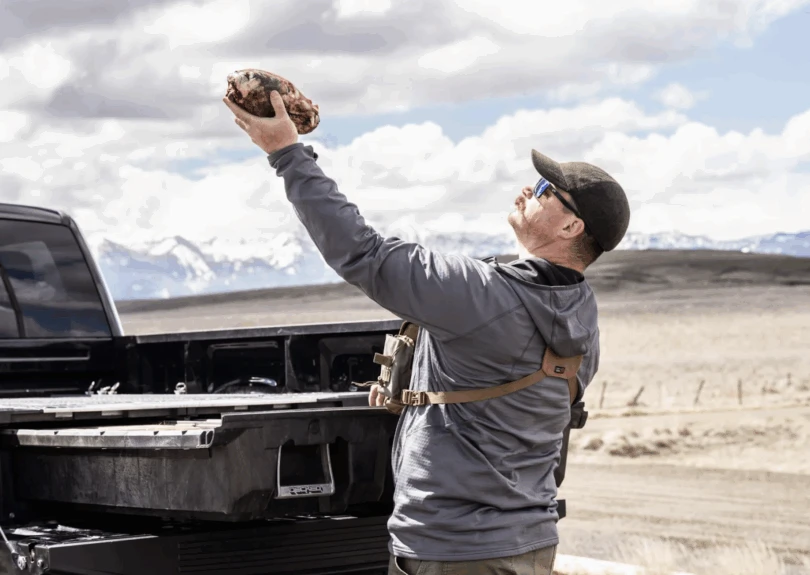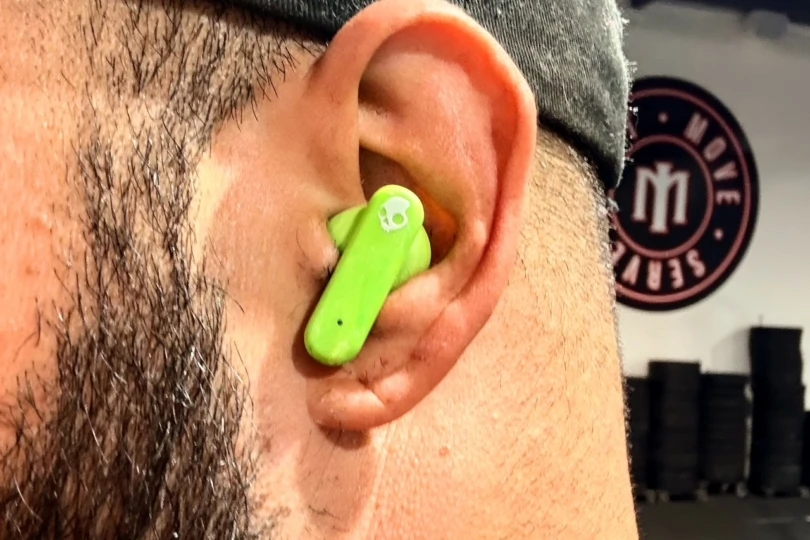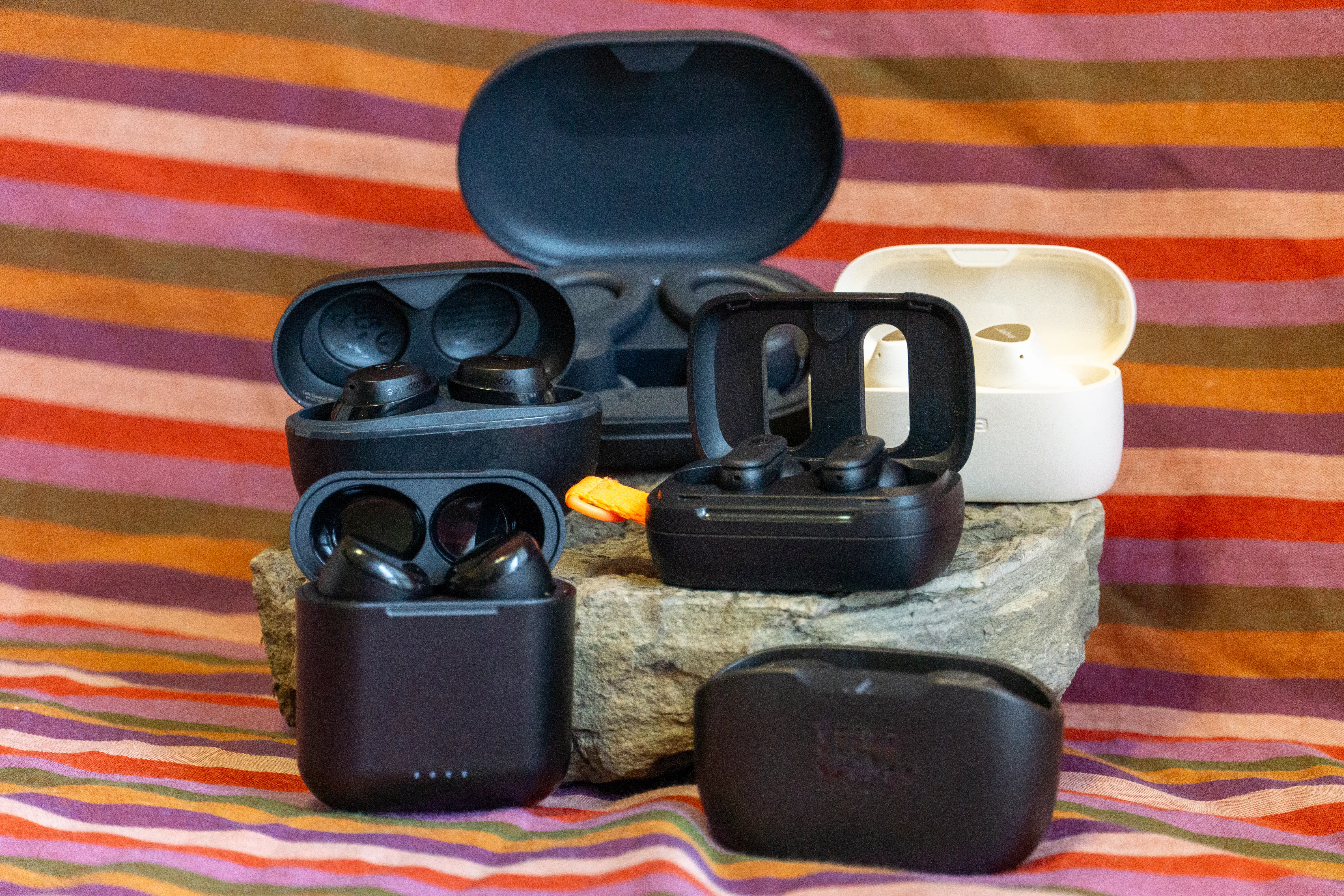Ahead of me, I see a double rainbow peaking through the trees. I’m high above Boulder, Colo., near the summit of Mount Sanitas. I’ve just trail run to the top, testing out the latest DJI Osmo Aciton 4 camera, and I think the rainbows would make for a great shot behind me.
I press two levers on the camera’s attachment method, and the DJI instantly pops from my chest mount. Then, I place the DJI on my selfie stick with a combination of magnets and two grippy levers. It only takes seconds. I get the shot before the rainbows disappear, a beautiful, fleeting moment in time now captured on video.
Here lies the best part of the DJI Osmo Action 4. Sure, the camera may have one of the biggest sensors on the market, allowing it to capture vivid landscapes and high-octane action sports. But the part of the camera that proved best was its ease of use in capturing said wide range of shots.
Say goodbye to boring montages of yourself skiing downhill from the same chest POV shot all day. The DJI Osmo Action 4 makes it easy to capture video from your chest, head, hand, selfie stick, suction cup, or whatever other mount you have set up.
In short: In my testing, I’m not convinced the large sensor size of the DJI Osmo Action 4 ($399) lives up to the image quality hype DJI puts out. The footage from the DJI was on par with other action cameras on the market.
But here’s where it ranks above competitors: The Osmo Action 4 shines most in its user experience (and it shoots easily for both horizontal and vertical). The Action 4 mounting system lets you change from a selfie stick to a chest mount in seconds, turning the user from a single camera into a one-person production company.
DJI Osmo Action 4 Camera Review
- Weight: 145 grams
- Waterproof: Up to 18m, 60m with separate case
- Touchscreen size: 2.25-inch rear screen, 1.4-inch front screen
- Storage: Compatible with microSD up to 512 GB
- Sensor: 1/1.3-inch CMOS with 2.4-micrometer pixel size
- Max Resolution: 3648×2736, 10 Megapixels
- Zoom: Photo 4x, Video 2x
- Recording settings: 4K (3840×2880) 24 fps-120 fps
- Recording settings: 1080p (1920×1080) 24 fps- 240 fps
- Wi-Fi: Compatible with DJI app
- Battery: 1770 mAh capable of shooting 160 minutes continuously
- Microphones: 3 included microphones and compatible with USB-C mics
Pros
- bigger sensor
- great vertical shooting
- easy to use, and switch mounts/POV (no extra attachments required)
- good resolution
- waterproof housing
Cons
- bigger sensor makes a small difference, but doesn't live up to quality hype
- low light performance isn't stellar
- same price as GoPro
What You Get: DJI Osmo Action 4
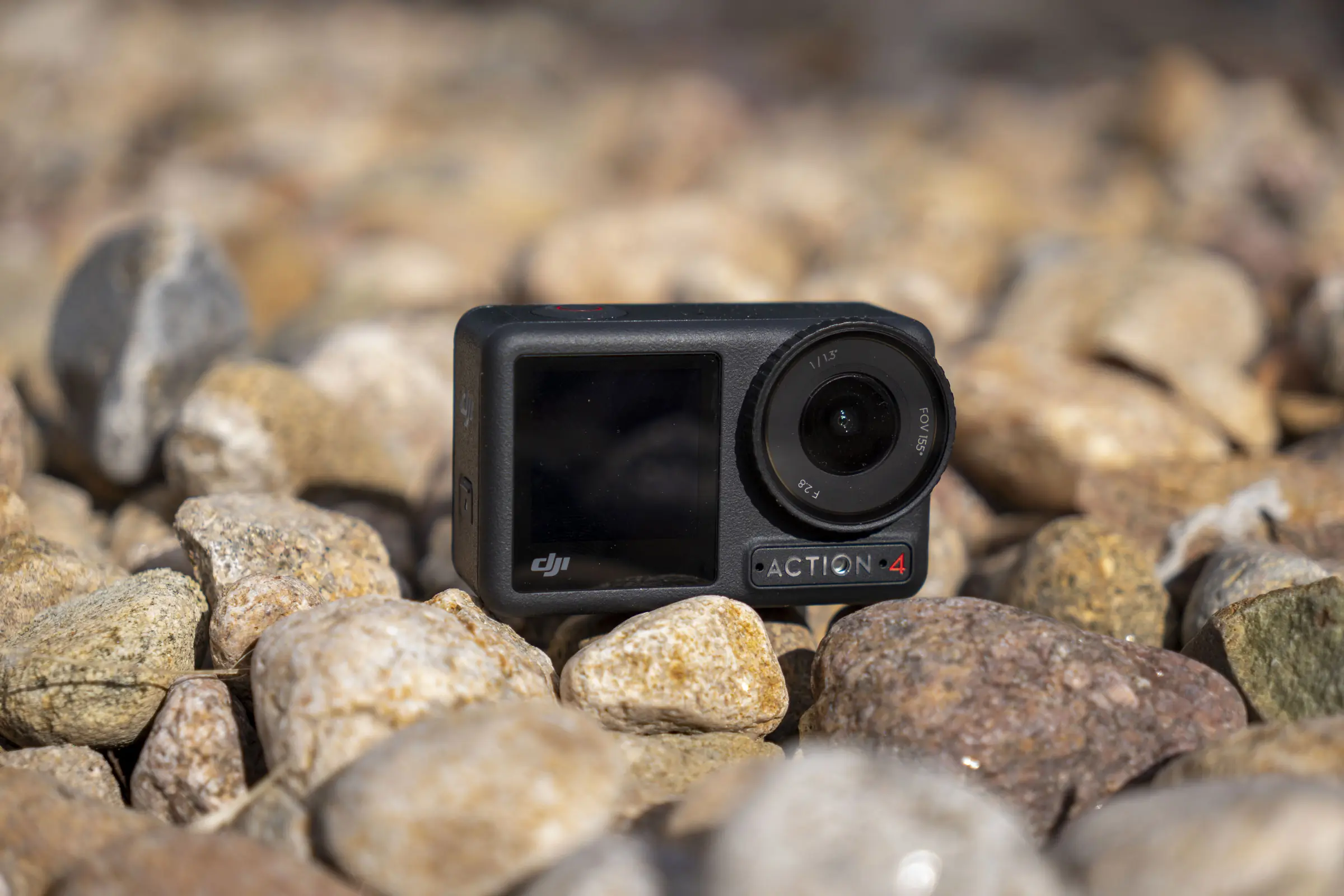
Released this summer, DJI’s fourth iteration of its Osmo Action camera line intends to compete with the biggest name in action cameras: GoPro. It has one of the biggest sensors on the market, with a 1/1.3” aspect ratio and 2.4-micrometer pixel size. The Insta360 One R and Sony RX0 II rival it in sensor size, both with 1-inch sensors.
The brand claims its sensor improves low-light performance and allows you to capture more vivid colors during the daytime.
Further, the Osmo Action 4 can shoot up to 4K video at 120 fps, the highest-quality and slowest-motion option the camera can spit out. It has internal stabilization called RockSteady 3.0 that holds the camera rigid still when going over massive bumps, as I found true in my mountain biking test.
Then, the camera can use 10-bit D-Log M color mode, which allows better creative freedom to color grade in post-production. I tested this mode out as well, and again, the camera does a great job. But don’t expect your footage to look like the latest Red Bull hype reel just yet.
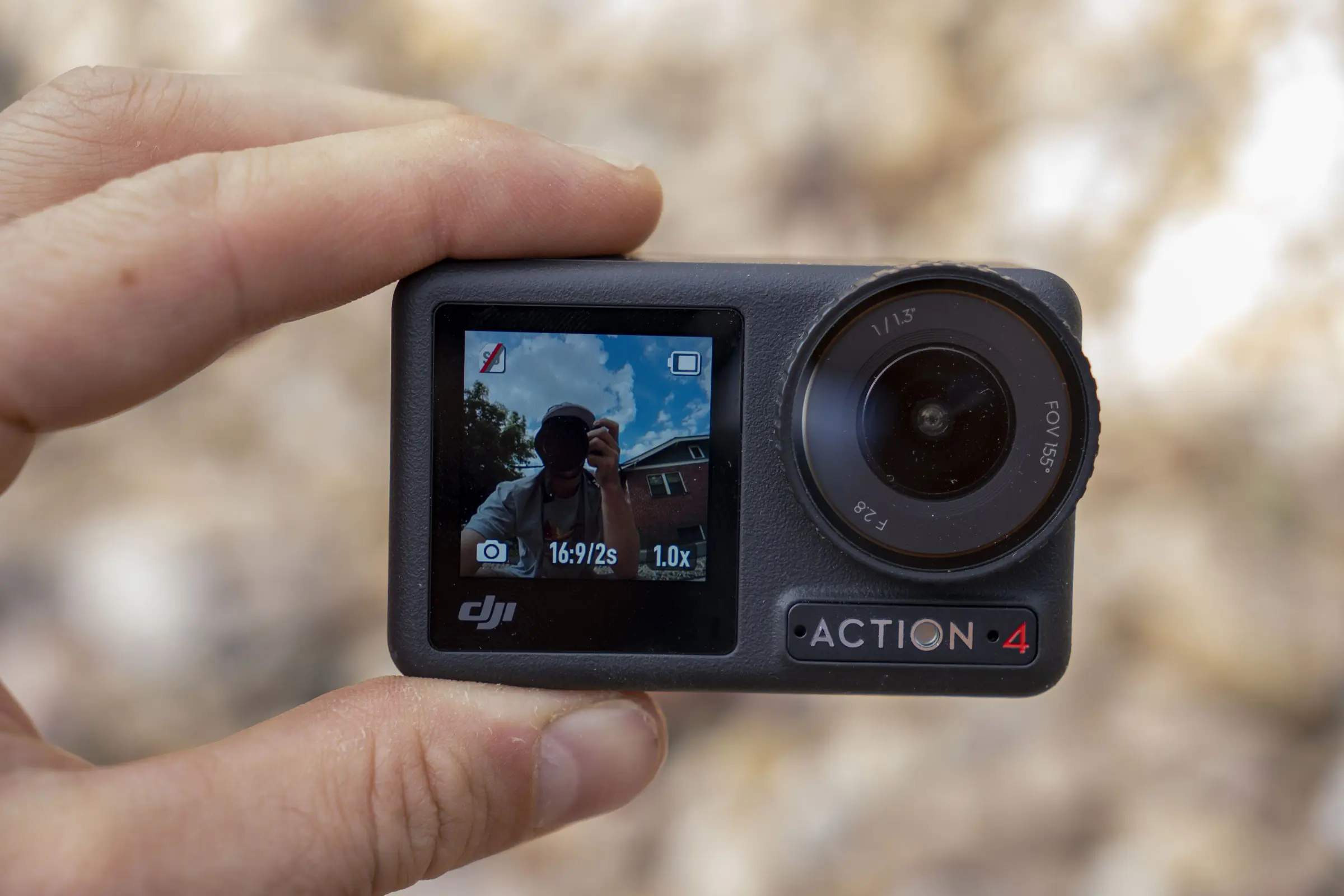



And last, some more product details: It offers up to a 155-degree field of view shooting, is waterproof up to 18 m without a special case, has dual touchscreens that are handy when recording yourself, voice activation commands, hyper-lapse, time-lapse, long-lasting battery, rapid charging, and native vertical video. Phew! Did I miss anything?
DJI clearly packed a boatload of features into this little camera. But in this review, I cared more about how the camera performs on the trail and how the footage turns out. After all, fancy terminology and an impressive array of numbers mean nothing if the footage is horrible.
Footage Test: How Does the DJI Osmo Action 4 Perform?
I used the DJI Osmo Action 4 on a mountain bike ride, while out trail running and hiking, and on a day of swimming and cliff jumping in a river.
For mountain biking, I put the RockSteady 3.0 to the test. I rode a moderately bumpy trail near sunset in Golden, Colo., with a few friends. I first noticed how loud the camera was preprogrammed to signal that I started and stopped recording. This setting is configurable from loud to completely off, but I liked how it was a clear reminder that I was actually recording.
When I went over rock gardens, small drops, and rocky sections, the RockSteady 3.0 stabilization feature did a great job stabilizing the footage. It has three modes: RockSteady 3.0, RockSteady 3.0+, and HorizonSteady. The plus mode is just a greater degree of stabilization, and the HorizonSteady mode keeps the horizon level in your frame.
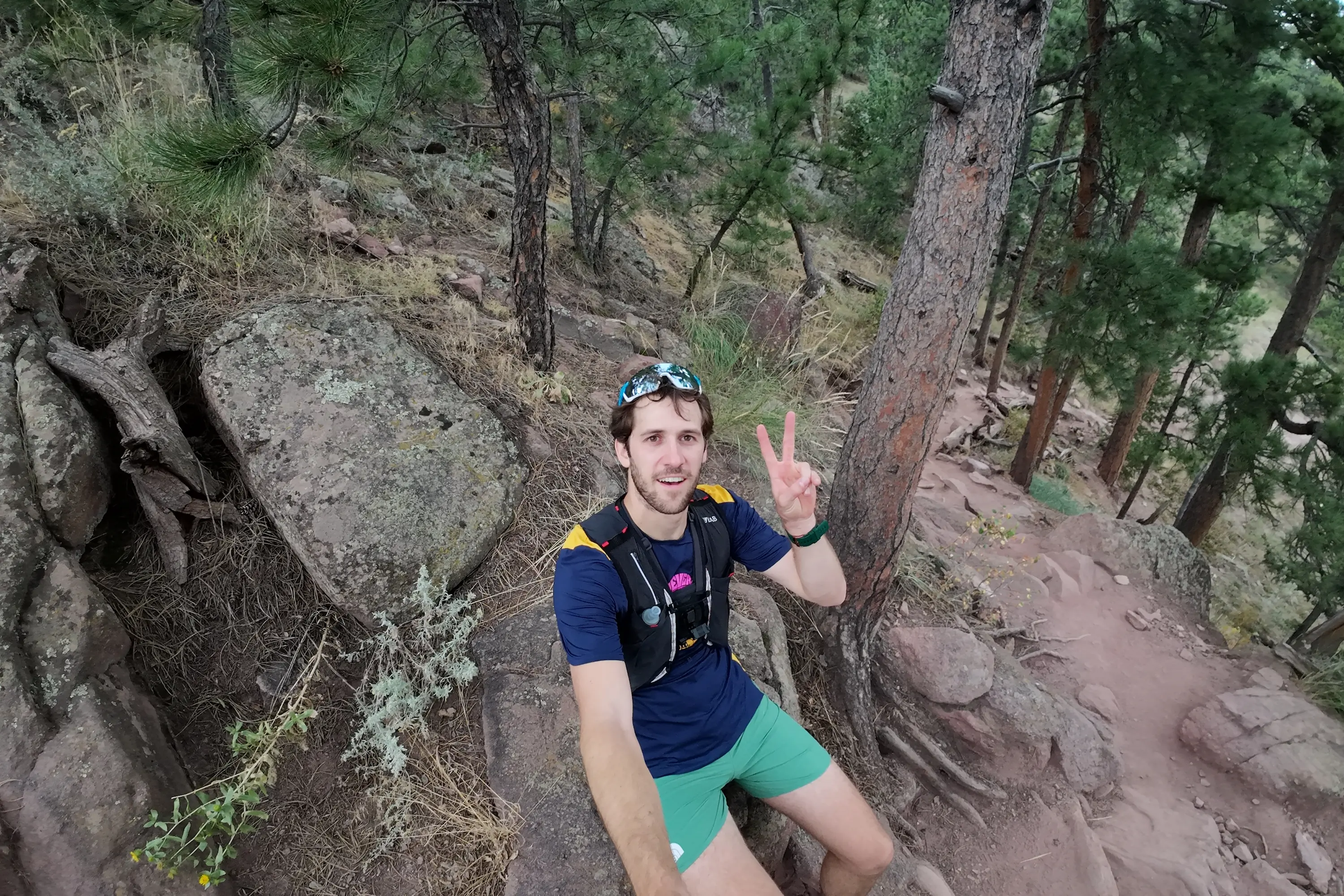



Aside from HorizonSteady, with each mode of RockSteady, the DJI will crop your frame slightly. This is to be expected, as stabilization software typically crops your footage so that the gyroscope can function.
We were riding in lower light settings because of the sunset, and I noticed some slight aberrations in the corner of the frame from time to time in the footage. It’s more noticeable when I slowed the footage down. At normal speed, it’s hard to notice at all. That minor detail feels nitpicky, though, and overall, I thought the stabilization performed great on this mountain bike ride.
Next, I cranked up the fps to 120 for some shots of my friends riding by. When slowed to 30% in post, you can get a tremendous amount of detail in the shot. I used one battery for the whole 90-minute bike ride and captured 20 GB of footage, mostly in 4K, 60 fps, and there was plenty of battery life at the end of my ride.
Trail Run Test: Highlight of the Osmo Action 4
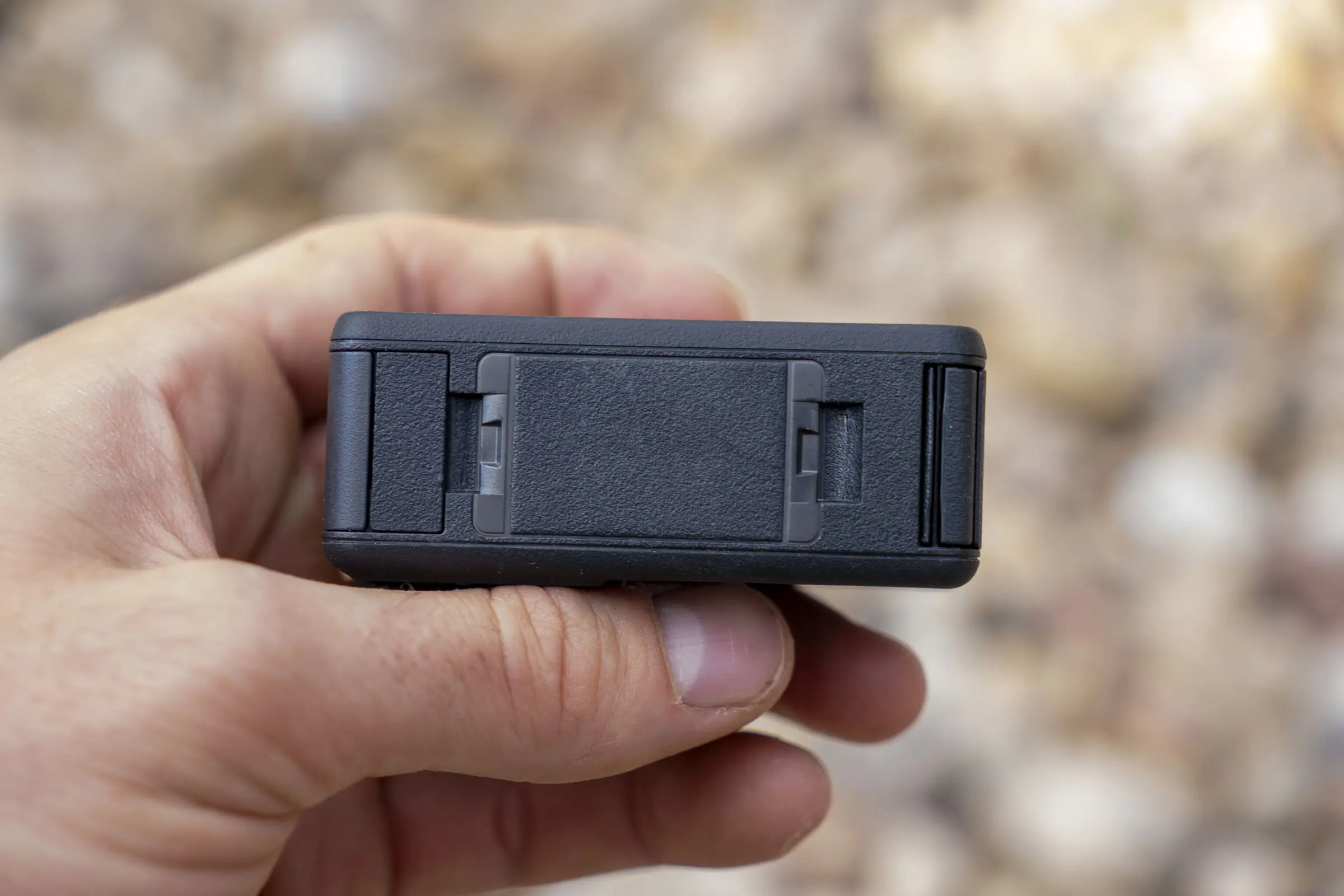



My favorite feature on the DJI Osmo Action 4 is not new for the camera model. On the bottom of the Action 4 are two divots and magnets. These magnets and divots allow a sturdy fit onto the brand’s mounts. When you squeeze both sides of the latches, the camera separates from the mount. This allows for rapid transfer from mount to mount.
This feature isn’t new for the Action 4, as it was also on the Action 3. But it distinguishes it from other action cameras like GoPro.
When you want to swap a GoPro from your helmet mount to a selfie stick, you have to unscrew the camera and re-screw the camera back into the mount, ensuring your camera is positioned correctly on the mount so your frame is perfectly captured. And if you’re like me, you ratchet down on those screws because you don’t want your camera coming loose, making them much harder to unscrew.
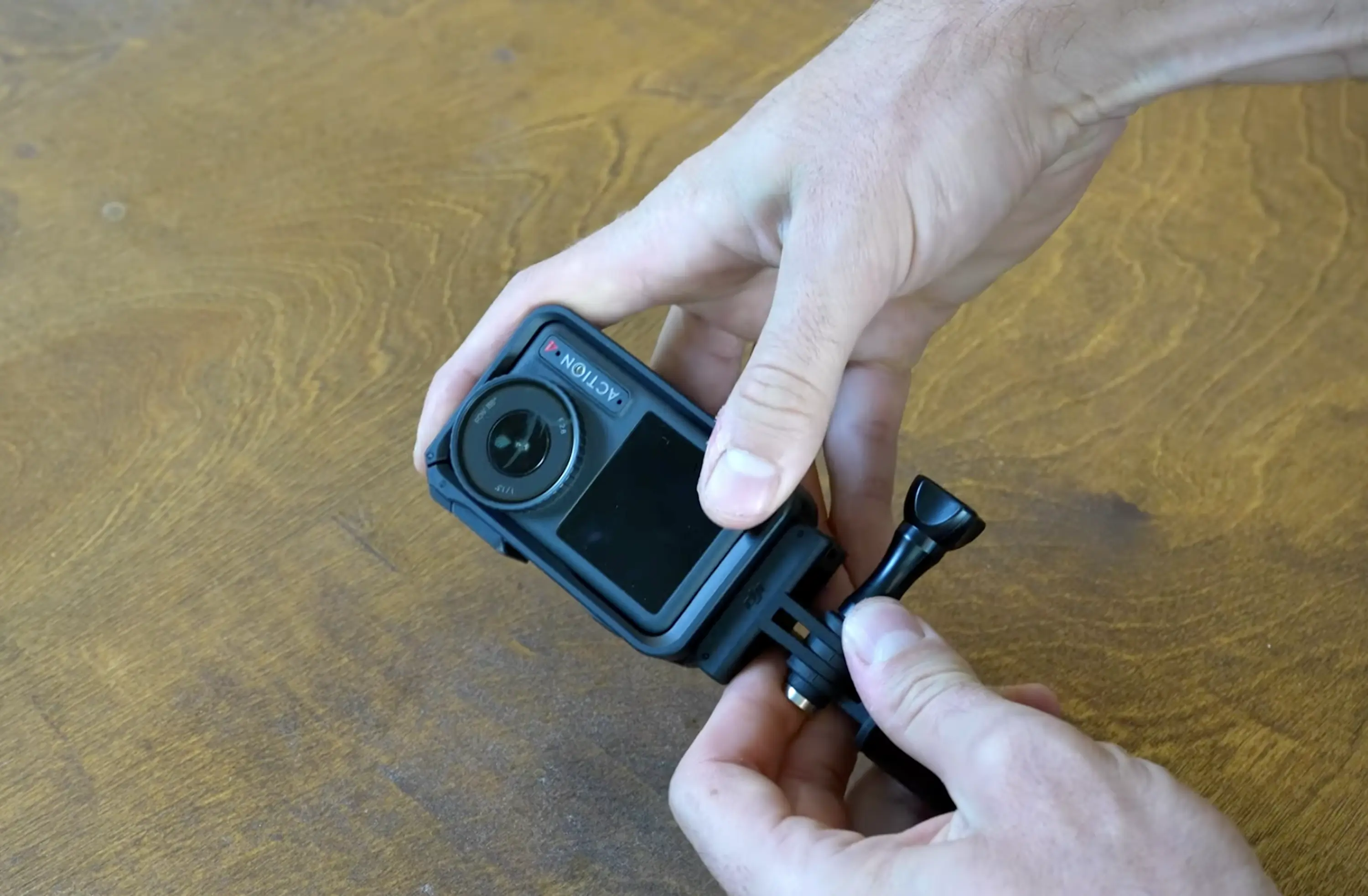



These screws are a hassle to deal with, and when you screw and unscrew them all day, they limit your ability to capture shots and your willingness to change from mount to mount to get a better shot.
Additionally, DJI sells its Osmo Action 4 camera with an external frame that snaps onto the DJI. With the frame, DJI enables you to switch from horizontal to vertical orientation thanks to two sets of latch points.
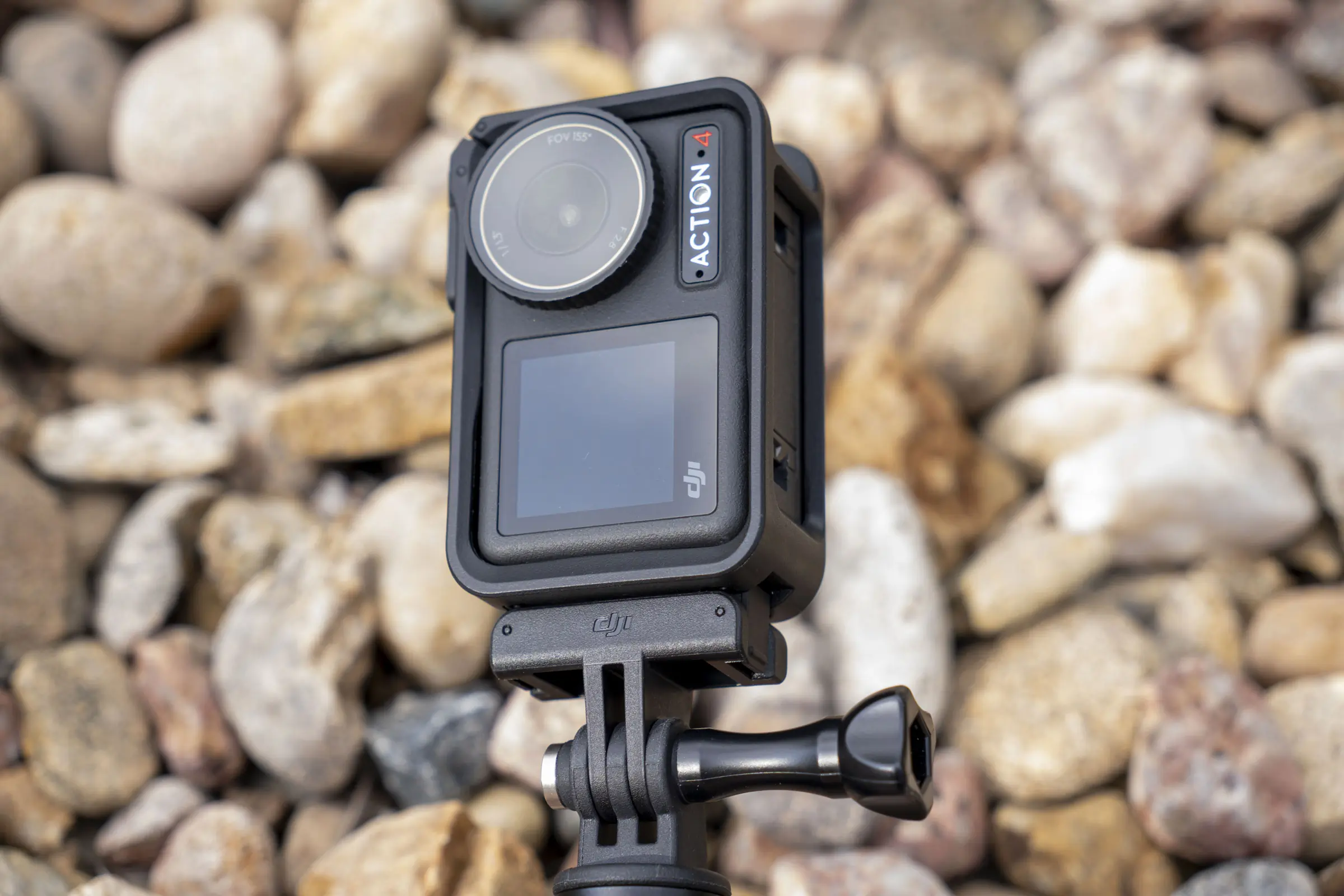



When I was trail running, I wanted to capture shots of my feet on the trail and the trail ahead of me with my chest mount. But I also wanted to get shots with my selfie stick of myself running and speaking into the camera. The latch system allowed extremely quick and satisfying transfer from mount to mount.
The external frame also lets you capture native vertical video (which I address more in the video review above). This enables you to use the entire camera’s sensor for the whole frame instead of the common method of cutting vertical video aspect ratios from horizontal videos.
You could argue that when shooting in 4K, there’s so much footage in the frame that it lets you quickly transform horizontal 4K footage into vertical. This is true, but in terms of image quality, recording native vertical video was superior in my experience.
With the rise of vertical video across platforms like YouTube, TikTok, Instagram, and, most recently, Twitch, the ability to record high-quality vertical footage of your action sports makes a big difference.
Conclusion: DJI Osmo vs. Its GoPro Competitor
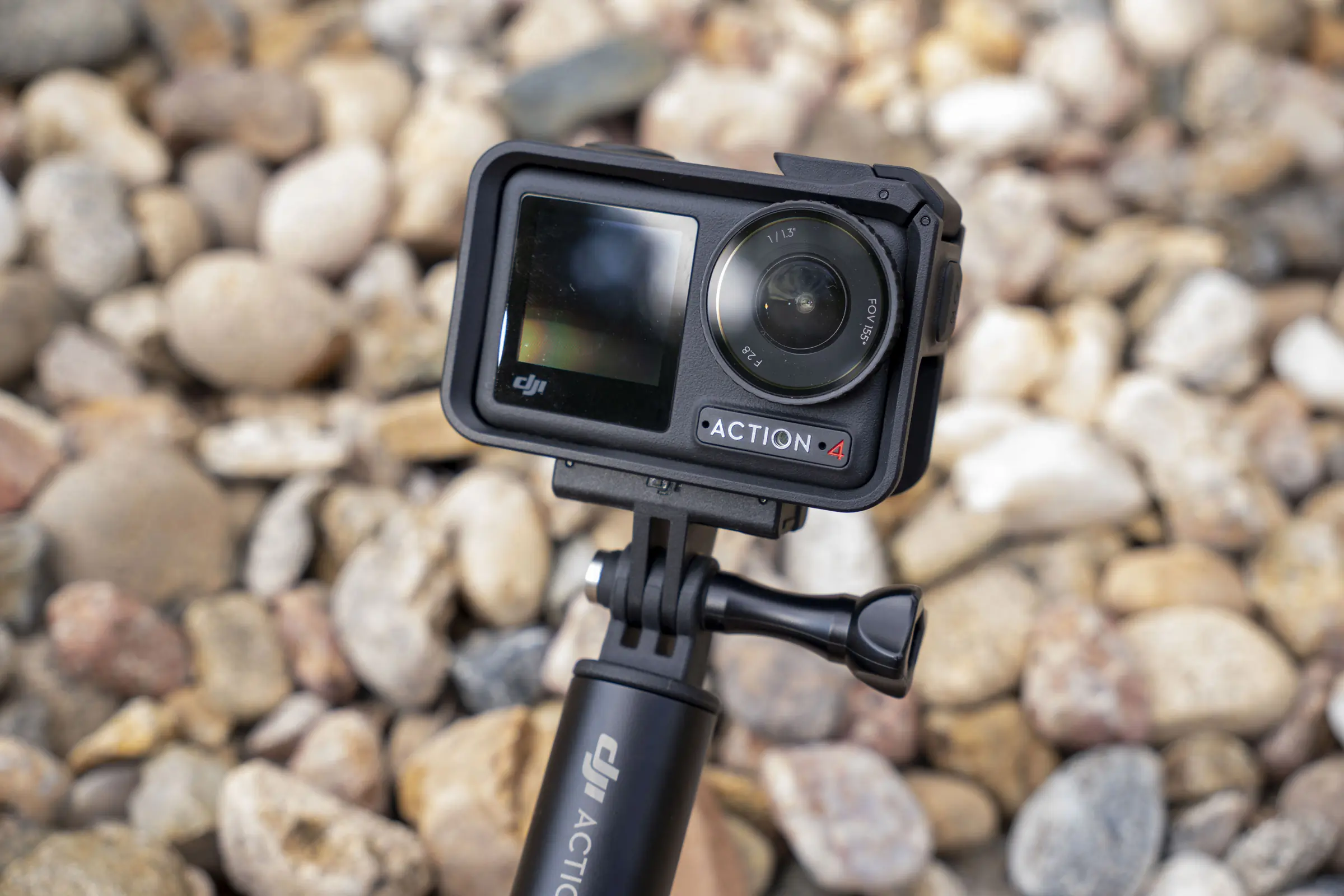



After reviewing the footage of my adventures, I thought the recording capabilities from the DJI Osmo Action 4 were impressive — but on par with other action cameras on the market. While I was out testing, I also brought my GoPro HERO11, released in 2022, and found the footage from the DJI Osmo Action 4 comparable to the HERO11 in most cases.
Both videos around the sunset looked awesome, with vibrant colors and rock-solid stabilization. Moving in and out of the water, both cameras were able to quickly shed water and record while getting dunked in the water. Even when recording in 10-bit color, when color grading in post, I wasn’t blown away by the quality improvements that this DJI feature offers.
The Osmo Action 4 made some decent shots out of extremely low light, but it still didn’t offer anything impressive regarding the resulting footage. I even untwisted the lens off of the Action 4 to reduce the amount of glass on the lens, which is a cool feature of the Osmo Action 4.
Finally, the DJI Osmo Action 4 is exactly on par with the most recent GoPro (HERO11) in terms of price — $399 MSRP each.
Who It’s for: The DJI Osmo Action 4
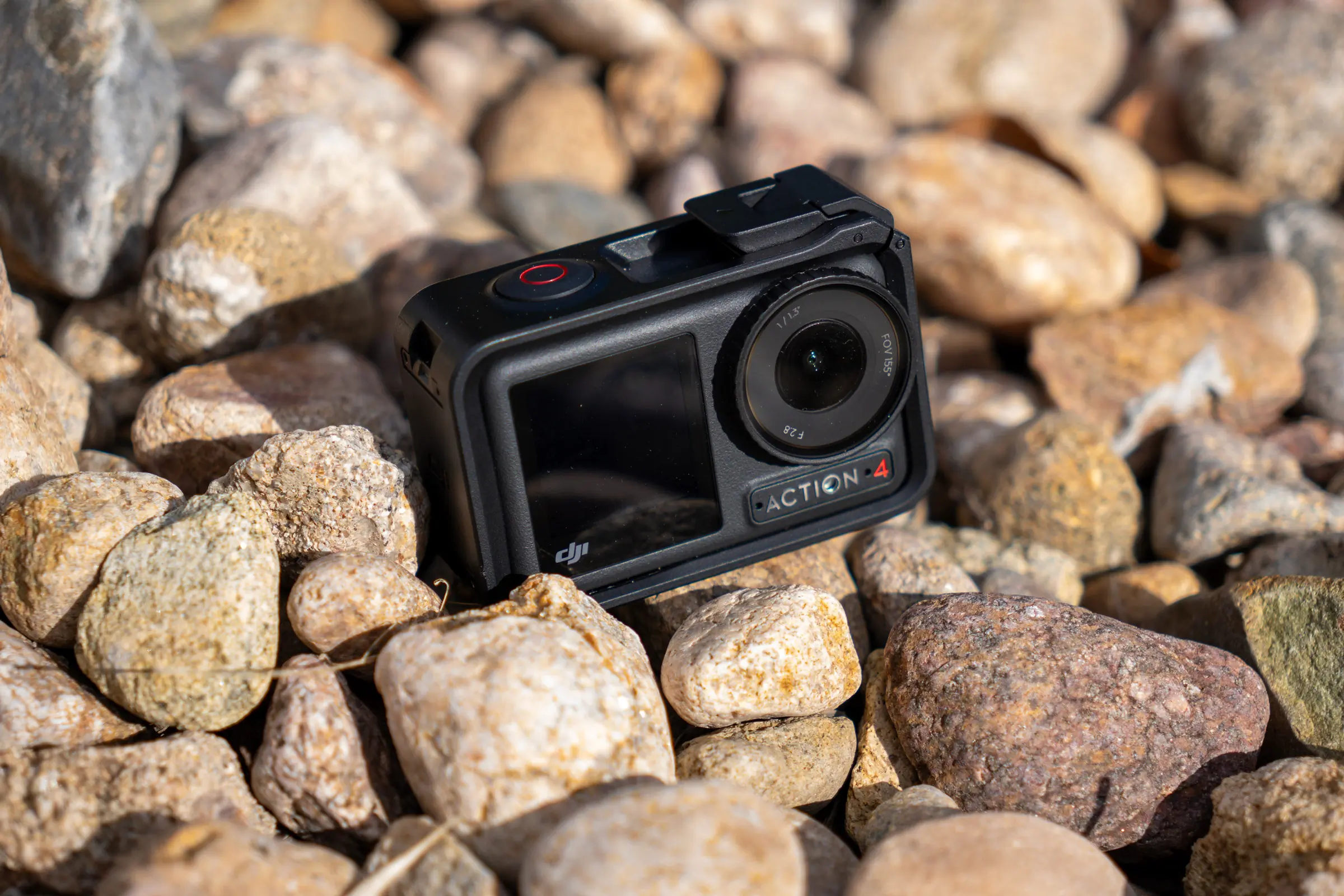



Because the Osmo Action 4 can churn out impressive footage that competes with the best action cameras on the market, its ease of use is its best characteristic.
For those who want to record a lot of vertical content, the DJI Osmo Action 4 is better suited for the vertical creator. And for those who hope to get a lot of shots out of a single action camera without investing in tricky attachments, the Osmo Action 4 is the one. It lets you switch from mount to mount quickly, allowing you to capture more angles when out shooting.
